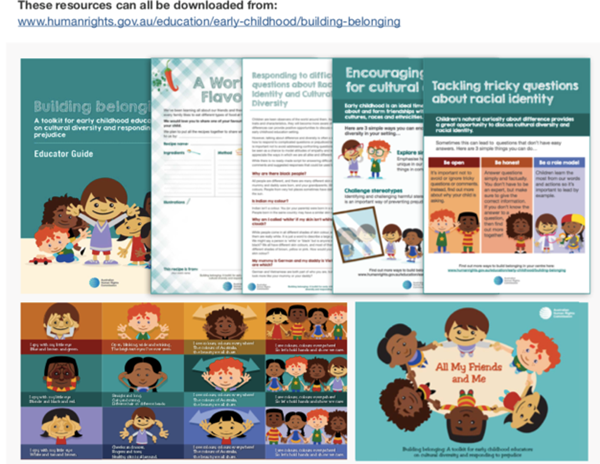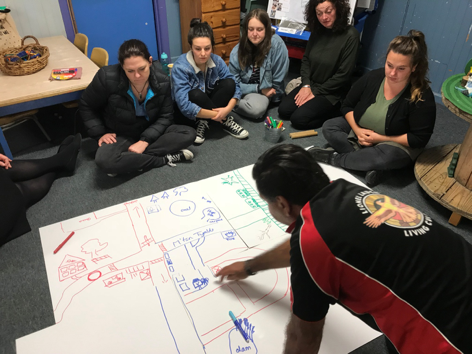After we shared on Amplify the expertise of learning specialist Kerrie Maguire in developing an early childhood education service Reconciliation Action Plan (RAP), your responses confirmed that creating a RAP is a high priority and linked to your Quality Improvement Plan (QIP) goals.
Since there’s nothing educators like more than learning from colleagues’ experiences and we’ve been very fortunate to find Lavinia Jenkin-Panelli, director, and Marieke Lutterberg, educational leader, from Tyabb Village Children’s Centre, willing to share every aspect of their RAP journey.
In fact, Lavinia and Marieke are preparing a book about the journey to share at their community-centred service and they have combined elements from their writing with additional responses to our questions for Amplify.
Their generosity means we are bringing you their journey as a four-part series. If you miss one, don’t worry, just click on the ‘RAP journey series’ tag in any article to find the rest, and we will include back-links at the end of each article as we release new sections across the four weeks.
And now, let’s join Lavinia and Marieke on part two of the story of the Tyabb Village reconciliation journey. In this instalment, they talk more about the why and how of creating a RAP, and share some of the highlights of the process so far.
…without strong and inclusive foundations that force us to use our new knowledge, really our knowledge is useless because we don’t have the directive to put it into action.
Why was it important to Tyabb village to have a public plan for reconciliation?
Having an Action Plan (RAP) keeps us focused and moving forwards. When we signed up to Narragunnawali, it made our commitment official and let us see what other early learning services and schools were doing.
In our first year we had our own internal action plan and we used this time to think deeply about the commitment we were about to make, to consult with others on the same journey, and talk to friends and families to gather support and gauge any issues or concerns. We attended a variety of professional development sessions and we planned our next steps.
Watch this video from Reconciliation Australia, where other educators share how they got started creating a RAP.
Many educators feel stumped when it comes to creating a RAP. What model have you followed?
We are using the Narragunnawali platform, which is created specifically for the early childhood and primary school sector.
Everything is well set out and while we have not yet officially submitted our whole plan, some of our actions are already in place.
The Narragunnawali platform helps you select which actions are relevant for your service (besides the required actions).
There are resources available for each topic, like Relationships, Respect, and Opportunities (in the classroom, around the school/service, within the community). The resources also map across to the Early Years Learning Framework by building belonging, for instance.
It’s a good platform to celebrate current successes, move forward and be challenged with new concepts and ideas towards reconciliation.
 Sample of the resources available from the Australian Human Rights Commission via Narragunnawali
Sample of the resources available from the Australian Human Rights Commission via Narragunnawali
How have you maintained your focus?
The strong relationship we’ve created with Living Culture (discussed in part one of this journey) has kept us focused and helps us see reconciliation as achievable.
It was only through many meetings, formal and informal, where we discussed embedding practice within our environment and in the children’s programs that we got to our ‘lightbulb moment’. We realised that [the RAP] was not only about building educator capacity, gathering knowledge and confidence, but also reviewing the service philosophy, policies and practices to ensure permanent change is successful.
Initially, we had our plan all upside down!
Our lightbulb moment
We can give all the knowledge necessary to our educators, our children and our families about being inclusive and providing culturally safe environments. But, without strong and inclusive foundations that force us to use our new knowledge, really our knowledge is useless because we don’t have the directive to put it into action. Without regular use of our new knowledge we won’t have the confidence to share it or the courage to challenge current practices.
It is only when we build strong and inclusive foundations and update guiding documents such as, the service philosophy, the policy and the procedures can we begin to make permanent change. Because, now we have an expectation that we use our new Knowledge and Skills in a confident way and that we build our capacity to share that with others in order to provide inclusive and culturally safe environments for our indigenous children and their families
We need to plant the tree first
so the branches can grow and the leaves can flourish.
What have been your highlights so far?
The collaboration with Lionel Lauch and Living Culture through the Innovative Solutions Program (see part one) has been invaluable.
 Creating songlines as a team, led by Lionel Lauch of Living Culture..
Creating songlines as a team, led by Lionel Lauch of Living Culture..
Lionel has helped our educators and children increase their knowledge and understanding of how we can learn and live with our local natural resources and environment. He also has shown us different ways of learning and sharing our knowledge.
During one of the learning sessions with the educators for example we created song lines for reoccurring or significant moments in our week.
He has provided us with a hands-on learning experience which could not be replicated in a typical professional development session.
Another highlight has been meeting likeminded people and watching our team come together with purpose. It’s been inspiring and assisted us to set a plan for Reconciliation which is respectful, sensitive and meaningful to the Tyabb Village community.
The story continues next week in part three: how Tyabb Village overcame challenges, embedded indigenous perspectives in the curriculum, and learned lessons worth sharing with others on a RAP journey.
The story so far
Part One of the Tyabb Village journey
Other related articles